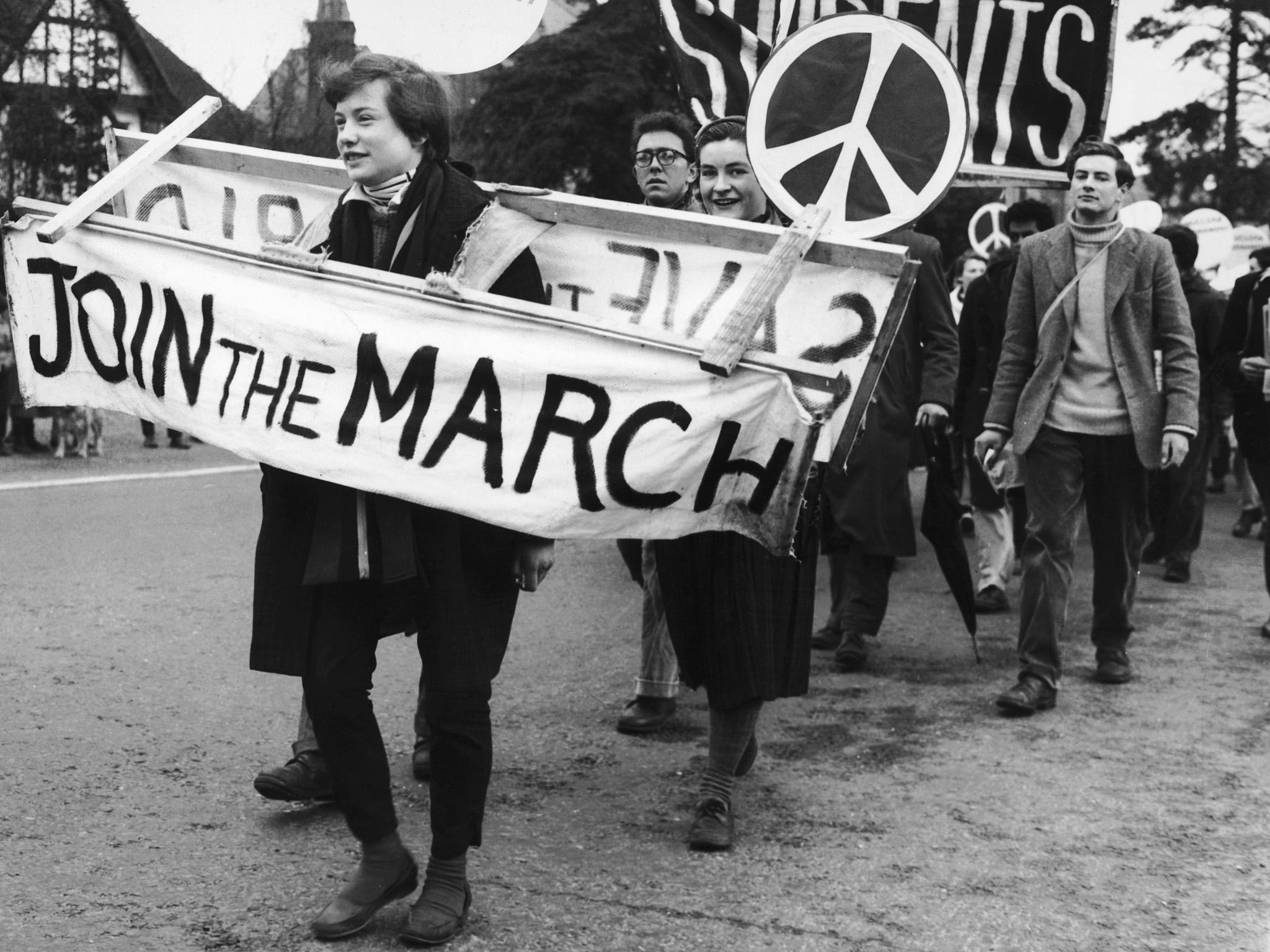Campaign for Nuclear Disarmament marches back into public arena after years of decline
CND may have slipped off the news bulletins, but it never went out of existence

Your support helps us to tell the story
From reproductive rights to climate change to Big Tech, The Independent is on the ground when the story is developing. Whether it's investigating the financials of Elon Musk's pro-Trump PAC or producing our latest documentary, 'The A Word', which shines a light on the American women fighting for reproductive rights, we know how important it is to parse out the facts from the messaging.
At such a critical moment in US history, we need reporters on the ground. Your donation allows us to keep sending journalists to speak to both sides of the story.
The Independent is trusted by Americans across the entire political spectrum. And unlike many other quality news outlets, we choose not to lock Americans out of our reporting and analysis with paywalls. We believe quality journalism should be available to everyone, paid for by those who can afford it.
Your support makes all the difference.More than three decades have passed since the Campaign for Nuclear Disarmament had a following large enough to bring traffic in central London to a halt, and fill the streets with banner-waving protesters united in their belief that the UK should renounce nuclear weapons
The movement hit its peak on Saturday 22 October 1983, when supporters in their thousands poured into Hyde Park, urged on by 2.3 million advertisements fly-posted by CND activists ahead of the event urging them to “be there”.
The crowd heard from a succession of eminent speakers, including the fiery new leader of the Labour Party, Neil Kinnock. Scotland Yard estimated that the crowd numbered 200,000. The organisers claimed 300,000.
For all their enthusiasm, the marchers had no impact at all on government policy. The land-based missiles to which they objected were taken away years later, not because of objectors, but under an international agreement. The Trident missiles are still carried in submarines, though there’s now a debate as to whether they should be renewed.
CND may have slipped off the news bulletins, but it never went out of existence. Bruce Kent, the former Roman Catholic priest who was a public face of the 1980s protest, still calls into CND’s north London headquarters a couple of times a week. The coming month will see several events designed to get CND back in the public eye, culminating in a rally in Trafalgar Square on 27 February where the main speaker will be Jeremy Corbyn. Organisers are expecting 50,000 or more.
Kate Hudson, long-serving CND general secretary, was a face in the crowd at the 1980s Hyde Park rally. “It was very exciting,” she said. “Those big demonstrations were my first experience of collective resolve. I have a very clear memory of one of those large demonstrations in Hyde Park. I remember seeing in the distance the little white shirt that was Monsignor Bruce Kent. I met him years later: it’s amazing to meet one of your heroes face to face.
“Then there was the fear factor. We felt that with cruise missiles coming, the Soviets and the US were gearing up to fight their nuclear war in Europe. Now people are thinking more about what is our security threat today. They think it’s terrorism, climate change, pandemic and cyber-crime, and are asking why are we spending potentially £183bn on something that doesn’t appear to have any military utility.”
Also working in CND’s favour is the shift in the political landscape, summed up in two words – Jeremy Corbyn. He stuck with CND during the wilderness years. One of his roles was as chairman of Labour CND. In 2014 he was confirmed in that position at an annual meeting that drew fewer than 50 supporters.
The next annual meeting takes place today. This time they have had to book a hall for 150 to 200 delegates. They will hear from Diane Abbott, the shadow International Secretary, and the first serving member of a shadow cabinet to address Labour CND for more than 30 years. Mr Corbyn will stand down as chairman to be replaced by Walter Wolfgang, a 92-year-old who escaped from Nazi Germany and was one of the founders of CND, nearly 60 years ago.
In 1957 the UK exploded a nuclear bomb. This inspired the launch of CND, with the philosopher Bertrand Russell as its president and the Labour MP Michael Foot as a prominent member.
But people became accustomed to living with the bomb. CND almost vanished until Margaret Thatcher decided to purchase updated Trident missiles from the US, and to allow the Americans to place cruise missiles at Greenham Common.
Between 1980 and 1984, CND membership swelled from around 4,500 to more than 100,000. Under Michael Foot’s leadership, unilateral nuclear disarmament became official Labour Party policy. But when disarmament talks between the superpowers began in the mid-1980s, CND again went into decline. Unilateralism was a vote loser. Neil Kinnock let his CND membership lapse as he fought a long, successful battle to reverse party policy.
Ian Chamberlain, CND’s spokesman, said: “The 1980s veterans have always been the core membership, but we now have a very large number of young people who were brought into politics by Jeremy Corbyn. During the Labour leadership election we were getting hundreds of new members each month. Success is closer than ever”.
Join our commenting forum
Join thought-provoking conversations, follow other Independent readers and see their replies
Comments